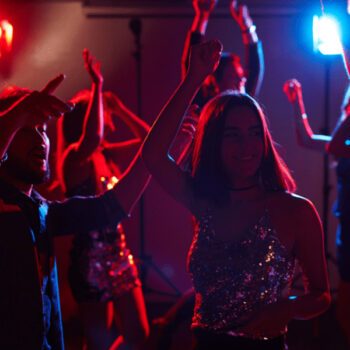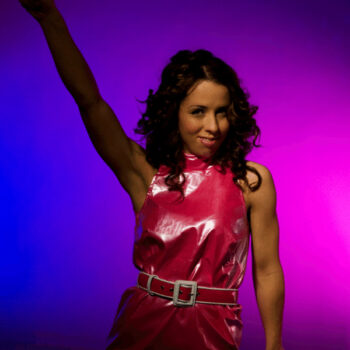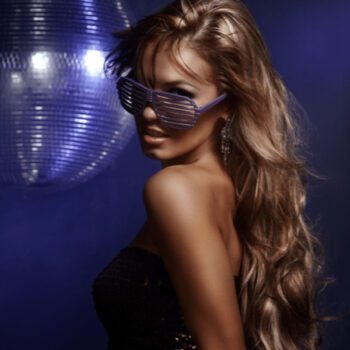Disco dance is a unique and captivating dance style that emerged during the 1970s in the vibrant era of disco music. It quickly gained popularity and has since become a cherished dance form. In this article, we will explore the characteristics of disco dance, delve into its various types and names, trace its rich history and origins, and provide an overview of disco dance moves.
What are the characteristics of disco dance?
Disco dance is characterized by its lively and energetic movements that perfectly complement the pulsating tempo of disco music. It incorporates elements from various dance styles such as funky chicken, soul, and Latin dances, resulting in a distinct and expressive form of movement. Dancers often incorporate flashy footwork, exaggerated arm movements, and fluid body isolations into their routines. The disco dance style exudes high energy, rhythmicality, and an emphasis on self-expression.
What type of dance is disco dance?
Disco dance is primarily a partner dance style, where dancers frequently perform in pairs or groups. It encourages interaction and connection between dancers, fostering a sense of community and celebration on the dance floor. However, solo disco dancing is also prevalent, allowing individuals to showcase their skills and creativity.
Types of disco dance styles
Disco dance encompasses a wide range of styles, each with its own unique flair and characteristics. Let's explore some of the disco dance styles names and popular examples:
- Hustle: The hustle is one of the most renowned disco dances. It features fast-paced footwork, spins, and partner lifts. The hustle is incredibly versatile and can be danced to a diverse array of disco songs.
- Electric Boogie: Also known as the electric slide or the electric glide, this line dance gained popularity in the 1980s. It involves a series of sliding steps and coordinated arm movements, often performed in unison with a group.
- The Bump: This disco dance style revolves around hip movements, where dancers “bump” their hips together in sync with the music. It gained popularity in the 1970s and continues to be a fun dance.
- The Bus Stop: The Bus Stop is a disco line dance that gained popularity alongside the song “Bus Stop” by the Fatback Band. It features a combination of side steps, kicks, and spins.
- The YMCA: While not strictly a disco dance, the YMCA dance became immensely popular during the disco era. It involves forming letters with the arms to spell out “YMCA” while moving in rhythm.
What are disco dances called?
Disco dances are commonly referred to as disco dance styles or simply disco dances. Disco dance styles list encompass a wide range of dance forms and routines that emerged during the disco era. Some popular disco dance examples include the hustle, electric boogie, the bump, the bus stop, and the YMCA. Different types of disco dances have their own unique characteristics and movements that contribute to the vibrant and energetic nature of disco dancing.
Popular disco dance styles
Popular chicken dance styles gained immense popularity during the disco era and continue to captivate dancers even today. These styles are characterized by their energetic and vibrant movements, often involving synchronized group routines or partner dancing. Each style has its own unique steps and choreography that became iconic in the disco dance scene, contributing to the overall excitement and entertainment of the popular dance era.
History disco dance
Disco dance originated in the early 1970s, primarily in the vibrant nightlife scene of New York City. It drew significant influence from the African-American, Latin, and LGBTQ+ communities, which played a pivotal role in shaping its development. The disco movement provided a space for people from diverse backgrounds to come together, express themselves through music and dance, and create a sense of belonging and liberation.
Disco dance origin
The origins of disco dance can be traced back to the fusion of various dance styles, including the Latin hustle, the Lindy Hop, and partner dances like the cha-cha and the mambo. These dances merged with the upbeat and infectious disco music, giving rise to a new and exciting dance form. The disco dance style experienced a surge in popularity with the release of the movie “Saturday Night Fever”, starring John Travolta, which showcased the electrifying disco moves and fashion of the era.
How to dance disco style?
If you want to master the art of disco dancing, it's important to take a few key steps. Here's a guide to help you get started:
- Find a Good School or Instructor: To learn line dancing properly, consider enrolling in a dance school or finding a qualified instructor. Look for experienced teachers who specialize in disco or dance styles from the disco era.
- Practice at Home: While attending classes or working with an instructor is essential, practicing at home is equally important. Set aside dedicated time to review and reinforce what you've learned.
- Learn the Basic Steps: Disco dance has several basic steps that form the foundation of the style. These steps include the hustle, shoulder shimmy, disco point, traveling disco step, finger pointing, hip swivel, and more.
- Attend Social Dance Events: Disco dancing is not only about learning the steps; it's also about immersing yourself in the disco culture. Look for social dance events, parties, or themed nights at local clubs or community centers.
Remember, mastering disco dance takes time and dedication. Be patient with yourself and enjoy the journey. With consistent practice, the guidance of a good instructor, and a genuine love for disco music, you'll soon be dancing like a true disco diva or disco king.
Disco dance moves
Disco dance moves consist of a variety of foundational steps that form the basis of the disco dance style. Here are some of the classic disco dance moves to get you started:
- The Hustle: The hustle is a versatile solo dance move that involves a series of side-to-side steps, often accompanied by spins, turns, and arm styling. Mastering the hustle will give you a solid foundation for disco dancing.
- Shoulder Shimmy: The shoulder shimmy is a classic disco move that involves lifting and dropping your shoulders to the rhythm of the music. It adds a playful and rhythmic element to your solo dancing.
- Traveling Disco Step: The traveling disco step involves to step forward with one foot, bring your left foot beside it, and then step back with the first foot.
- Double Arm Swing. This is a dynamic disco dance move that involves swinging both arms in sync with the music, creating a visually striking and energetic display on the Latin dance floor.
Disco dance style continues to captivate disco dancers and music enthusiasts with its infectious energy and vibrant movements. It has a rich history rooted in the disco music era, bringing together diverse communities and fostering a sense of liberation and self-expression. From the hustle to the electric boogie, disco dance craze offers a variety of styles to explore and enjoy.




